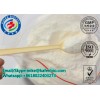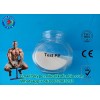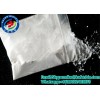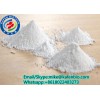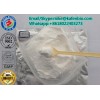Whatsapp:+8618022403273
Antibiotics Alkaloid Pharmaceutical Raw Materials Chlornitromycin Chloramphenicol
Basic Info.
Chloramphenicol / Chlornitromycin
Alias: 99.5%
CAS: 56-75-7
Einecs: 200-287-4
Molecular formula:C11H12Cl2N2O5
Molecular weight:323.13
Package:25kg/ drum or as required
Usage:can be used as pharmaceutical material
Storage: Shading, confined preservation
Appearance: white crystal powder.
Usage: Genus of broad-spectrum antibacterial antibiotics,it is the treatment of typhoid, paratyphoid medicine, one of the effective drug for the treatment of anaerobic infections, secondly for the treatment of various susceptible disease caused by microbial infections .
Product introduction:
Chloramphenicol is on the World Health Organization's List of Essential Medicines, a list of the most important medications needed in a basic health system. Although unpublished, recent research suggests chloramphenicol could also be applied to frogs to prevent their widespread destruction from fungal infections. It has recently been discovered to be a life-saving cure for chytridiomycosis in amphibians.
The most serious adverse effect associated with chloramphenicol treatment is bone marrow toxicity, which may occur in two distinct forms: bone marrow suppression, which is a direct toxic effect of the drug and is usually reversible, and aplastic anemia, which is idiosyncratic (rare, unpredictable, and unrelated to dose) and generally fatal.
Effect:
Because of its excellent blood-brain barrier penetration (far superior to any of the cephalosporins), chloramphenicol remains the first-choice treatment for staphylococcal brain abscesses. It is also useful in the treatment of brain abscesses due to mixed organisms or when the causative organism is not known.
Use of intravenous chloramphenicol has also been associated with gray baby syndrome, a phenomenon resulting from newborn infants' inability to metabolize chloramphenicol in the body. Other less serious reactions include fever, rashes, headache, and confusion. Prescription use is usually associated with monitoring of a patient's complete blood count. The drug should be discontinued upon appearance of reticulocytopenia, leukopenia, thrombocytopenia, anemia, or any other abnormal blood study findings attributable to chloramphenicol.








